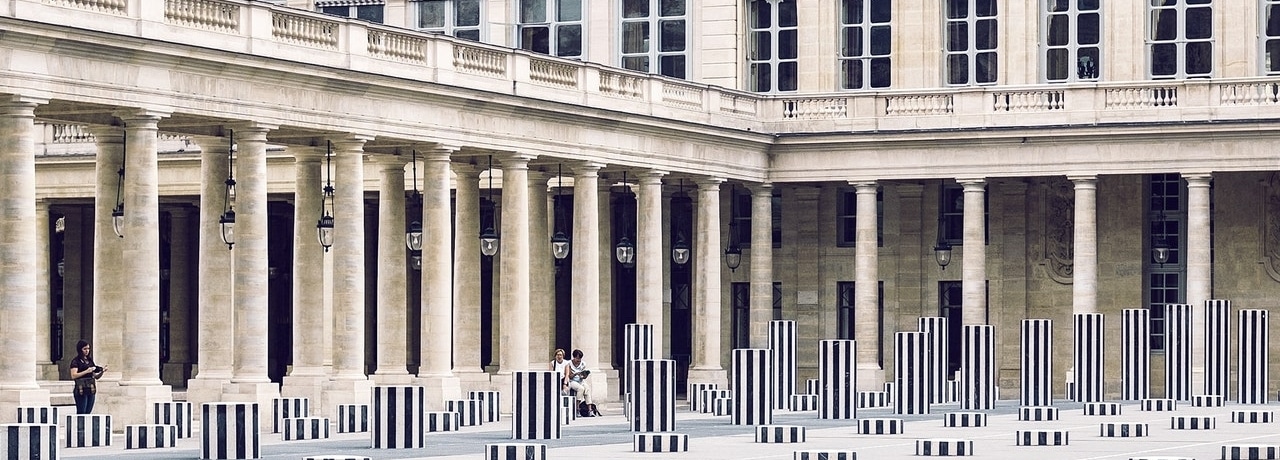What better way to enrich your knowledge and develop your ability to interact on a specific topic than a vocabulary list?
In this article, we compiled for you an architecture vocabulary list with the top 100 common words used. You are going to learn what each and every one of them mean and how you can use them depending on the context.
So if you want to become a professional in architecture, grab a pen, keep reading and take some notes!
Whether you wish to take the IELTS, TOEIC, TOEFL, CAE, FCE, BRIDGE, BULATS (Linguaskill) or even the BRIGHT ENGLISH, you need to enhance your English vocabulary in order to prepare for your test. We have have made a long list of vocabulary worksheets:
- Anthropology Vocabulary
- Chemistry Vocabulary
- Stock Market Vocabulary
- Real Estate Vocabulary
- Purchase Vocabulary
- Product Vocabulary
- Research Vocabulary
- Phone Vocabulary
- Payment Vocabulary
- Office Supplies Vocabulary
- Management Vocabulary
- Law Vocabulary
- Human Resources Vocabulary
- The Factory Vocabulary
- Vocabulary List: Bank and Finance
- Computer Vocabulary
- Marketing Vocabulary
- Social Media Vocabulary
- Meteorology Vocabulary
- Culture Vocabulary List
- Sociology Vocabulary
Be sure to check them out and improve your English knowledge!

Architecture Vocabulary: Top 100 Most Common English Words
- abutment: structural component supporting the lateral and vertical loading of structures.
- arcade: a series of arches carried by columns.
- architectonic: the science of architecture.
- articulation: a method of jointing elements of an architectural design.
- BIM: (“Building Information Modeling”) construction information 3D-model tool.
- biomimicry: application of natural environment in construction principles.
- bracket: architectural element placed in a corner to strengthen an angle.
- building envelope: roof, sub floor, exterior doors, windows and exterior walls.
- cladding: components attached to the primary structure of a building to form non-structural, external surfaces such as curtain walling or rainscreen.
- cloister: covered walk running along the walls of buildings and forming a quadrangle.
- colossal: architectural order based on multilevel columns.
- composite: assembly of two different materials working better together than apart.
- cornice: crown of an architectural structure rejecting rainwater away from the facade.
- cradling: a framework of iron or wood, used to support a ceiling.
- curvilinear: consisting of or bounded by curved lines.
- denticulate: having dentils.
- diagram: a drawing explaining the principles, elements and components of an architectural concept.
- diastyle: columns separated by three diameters.
- diminish: to cause an architectural element to taper.
- dipteral: construction having a double row of columns.
- drum: cylindrical blocks of stone composing a column.
- elevation: a representation to scale of the external face of a building or structure.
- eurythmy: harmonious proportions of a design or building.
- facade: the face of the building with the main entrance.
- fenestration: all of the openings in the building envelope such as windows, doors, and skylights.
- filler: materials combined together to make them cheaper or lighter.
- flamboyant: French Gothic style of architecture characterized by a wavy flame appearance.
- floor plan: a drawing to scale giving a bird’s eye view of the dimension and spatial relationships between objects and fixtures of a structure.
- floriated: architectural structure with ornamentation based on flowers and leaves.
- fluting: a furrow dug in a column.
- foliation: ornamentation consisting of foliage.
- folly: a structure deliberately built as an ornamente to serve as a conversation piece or to lend interest to a view.
- form: the shape and structure of something.
- galilee: the entrance of a porch or chapel.
- galleria: a central promenade or court usually separating a shopping centre in two.
- ground plan: a drawing of the ground floor of a building.
- hexastyle: a portico or façade with six columns, usually representative of Greek temples.
- hierarchy: importance of a form or space by its size, shape, or placement relative to the other forms and spaces, based on how noticeable they are.
- high-pitched: a roof having high and tilted slopes.
- hip: the external angle where the sloping sides of a roof meet.
- homogeneous: an architectural structure composed of parts that are all of the same nature or kind, or appearing as uniform.
- hypostyle: closed space with a roof supported by columns.
- imbricate: having tiles, shingles, or slates creating an overlapping cover.
- intercolumniation: the proportional spacing between columns.
- joggle post (or king post): a central vertical post or beam consisting of two timbers joined to each other by joggles, working in tension to support a beam below.
- juncture: intersection of two different materials, influencing how the building will age.
- juxtaposition: two parts being placed close together or side-by-side, permitting comparison or contrast.
- lancet: diagonal arch belonging to the Gothic style, shaped as the tip of a spearhead.
- lead holder: a mechanical drawing tool in which architects can use different types of lead to create different types of lines.
- lierne: a short rib connecting the intersections of the primary ribs, representative of the Gothic vaulting.
- lintel (or summer): horizontal piece (of wood, stone, metal) forming the superior part of an opening and supporting a structure.
- listed building: an officially recognized and protected building with a particular historical or architectural interest.
- loggia: a covered and closed on the sides balcony, acting as an integral part of the housing.
- massing: a structure in two or three dimensions.
- member: a component part of a building or structure.
- merge: to combine, blend, or unite so as to blur distinctions and to make it look similar to what is around it.
- module: conventional unit of measure adopted to regulate the various parts of a whole.
- naos: central part of a Greek sanctuary and intended to receive the statue of the god in an Egyptian temple.
- order: proportions, shapes and ornamentation of any part built in elevation (Doric, Ionic, Corinthian, Tuscan, and Composite).
- orientation: the position of a structure based on the east-west axis.
- parti: organizing decisions behind an architect’s design, presented as a basic diagram or a simple statement (coming from the French expression “parti pris”).
- piloti: the traditionally wooden piles driven into the ground and intended to support a construction out of water or above the ground.
- polychromy: the art of using several colors.
- post and lintel (or trabeated system): construction system where robust horizontal elements are held by robust vertical elements, such as Stonehenge for example.
- postiche: ornament of sculpture encrusted in an architectural decoration.
- profile: a representation of an object in contour or outline.
- prostyle: temples having only one row of columns in front.
- pulvinate: curved convexly, with a swelling.
- queen post: tension member in a truss that can span longer openings than a king post.
- rampant: an element which is inclined and so arranged as to provide a slope.
- rendering: the art of creating three-dimensional images or animations in order to demonstrate the attributes of an architectural design.
- respond: a pilaster bonded into the wall and supporting an arch or a lintel.
- return: an architectural feature forming an angle with the main part.
- rhythm: a patterned repetition of elements in the space, a recurrence of lines, shapes, forms or colors.
- ribbon development: houses built in a continuous row along a main road, with individual accesses.
- rise: the height of an architectural structure.
- rusticate: a masonry treatment used to separate blocks thanks to large joints and decorated with a textured design.
- scale: how the sizes of different architectural elements relate to one another, based on a reference standard.
- sexpartite: a rib vault divided into (or composed of) six parts, by two diagonal ribs and three transverse ribs.
- shaft: a column or structural member that supports a vaulting rib, between the capital and the base.
- shell: the part separating the external space of the structure of a building from the internal one.
- soffit: the underside of an architectural element, different from the base.
- spatiality: anything relating to, involving, or having the nature of space, in order to place and measure an architectural structure in the space.
- springing: the voussoirs requiring support from below until the keystone has been set in place, this is the level where an arch or vault rises from this support.
- stilts: structure or building to stand at a distance above the ground, vertical piers between the impost and the springing.
- storey: a floor or level of a building or architectural structure, that could be used by people.
- stria: a narrow channel, a set of parallel stripes on a structure.
- stringer: a long horizontal beam used for structural purposes, supporting cross members in floors or ceilings.
- stylobate: a pedestal supporting a colonnade, with molding, base and cornice around the perimeter of a building.
- subbase: the lowest part laid on the subgrade, on which the base course layer is located, to help prevent pumping of fine-grained, subgrade soils.
- summertree (or bressummer): a stone on the top of a column, pier, or wall that supports a wall, arch, lintel above a gap or opening.
- supercolumnar: one colonnade above another or placed above a column.
- surbase: the uppermost part of a pedestal above the base of a structure.
- sustainable (or green building): the structure, and the processes related to this structure, environmentally responsible and energy efficient, in order to ensure the building’s ecological balance.
- symmetry: element that we can divide in two parts and superimpose perfectly, without anything exceeding.
- tailpiece (or tail beam): a piece forming an end, embedded in a wall.
- tectonics: the science or art of construction, including shaping, ornamenting, or assembling materials.
- texture: the structure given to a surface, playing with the size, shape, light and proportions of the architectural components.
- truncated: cut by subtracting a significant part.
- uniformity: architectural structures being identical, homogeneous, or regular.
Now, it’s time for you to practice and start including these words in conversations with your architect friends! The more you use them, the easier it will be to remember when they are necessary and what they describe.

Learn and Improve Your English Online With GlobalExam
English is more and more in demand for many qualifications, school courses and trades. GlobalExam presents its solution adapted to all and also helps you to understand and learn vocabulary.
Whether you want to improve your English skills for a better professional future, access the job of your dreams or get promoted with a better level of business English or review the basics in professional English that you may find useful in a variety of situations, GlobalExam is here to help you achieve your goals.
On the platform, we offer you tips, lessons, exam preparation tests, as well as resources to help you go further in your learning, such as vocabulary, grammar sheets or ebooks.
Ready to become a more valuable asset and gain more skills? Don’t wait another day to start!



